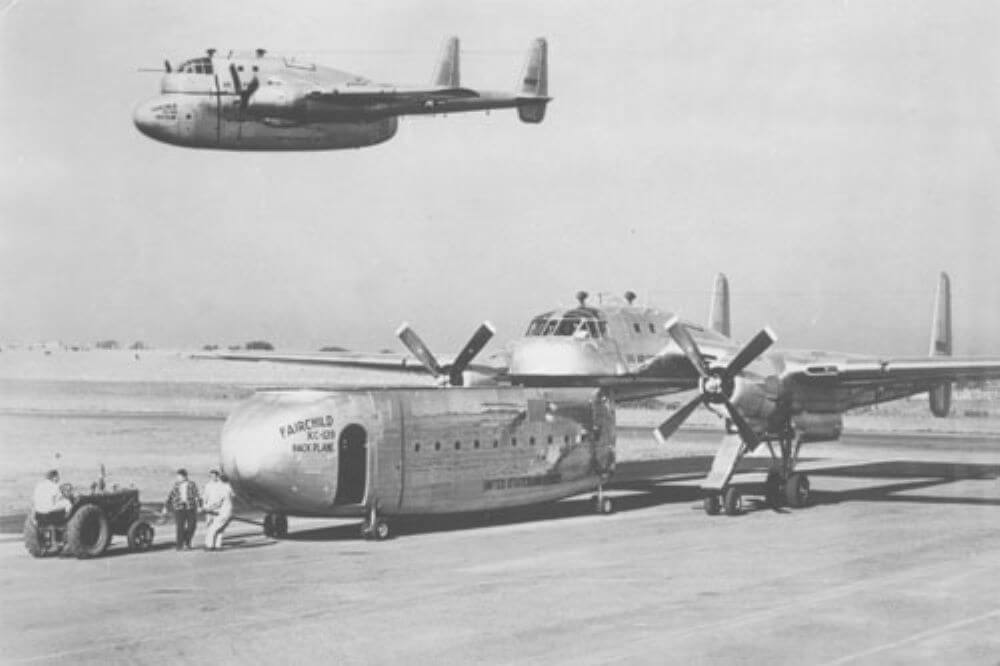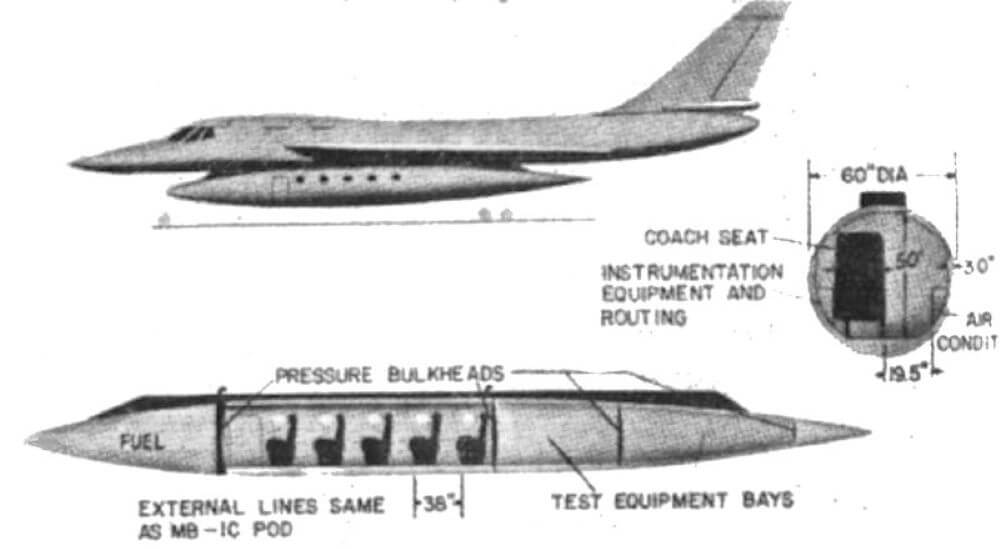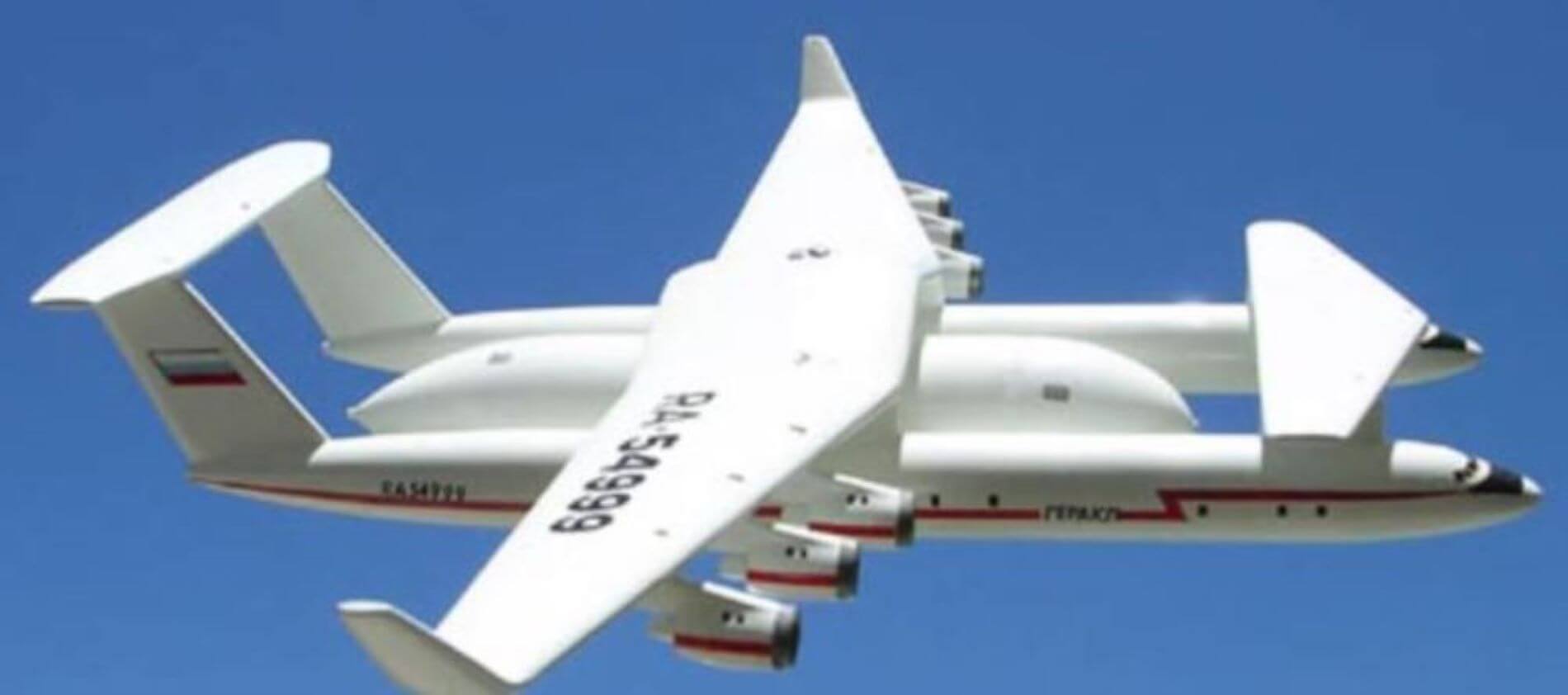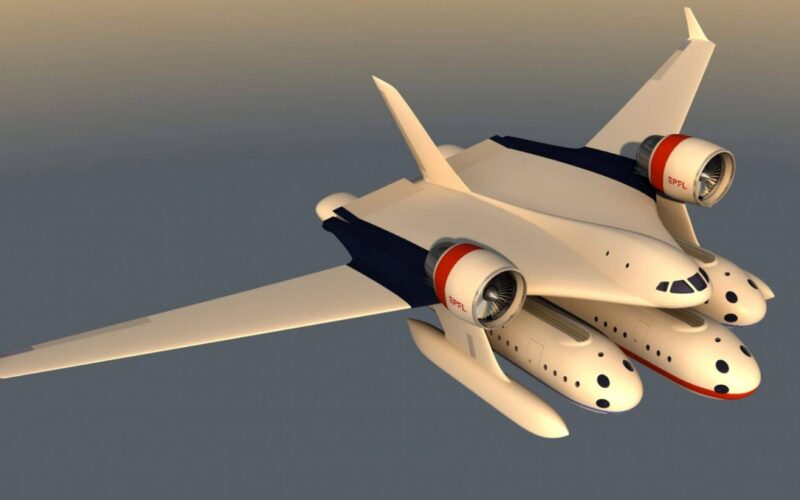Modular aircraft are one of those things that look extremely good on paper, but despite a long history of attempts, have never been successfully implemented.
The cargo side of their story is relatively well known. But there is a passenger side, with airliners that would have detachable compartments for easier, quicker and safer transportation. Which means, at more than one point in history there was a chance that we would all end up flying inside huge detachable pods slung under the belly of an aircraft.
Crazy, right? One of those strange impractical ideas that the industry left in the past… Or is it? Let’s take a look at the long, weird and still ongoing history of passenger pods.
Pre-history
The idea of passenger pods, pardon the pun, cannot be detached from the history of modular aircraft. Fieseler Fi 333, developed in the early 40s, is often credited as being the first of them – a twin-engine monoplane that would haul cargo either in a pod or simply attached to the underbelly. It may or may not have started the wave of modular airplane designs, with British Miles M.68, Italian Savoia-Marchetti SM.105 and Fairchild XC-120 Packplane projects popping up a decade later. All of them offered to transform air transportation as we know it.
Of those, the SM.105 was the only one that looked beyond the cargo transportation. One of its main selling points was a possibility to transport up to 40 passengers in a pod complete with panoramic windows, a bar and a lounge. The advantages over traditional airliners of the era were obvious. With a simple swap of the pod the aircraft could be changed from a passenger carrier into cargo hauler, or adapted to any other purpose. The same airframe could perform multiple tasks with just minimal changes, and most importantly – turnaround times would be nearly non-existent.
The conditions in post-war Italy were not the best for the new ambitious project, though. So, the aircraft never progressed beyond wind tunnel tests. But its counterparts in significantly more well-off countries – the UK and the US – failed too, burying the idea of modular aircraft for at least some time.

Fairchild XC-120 Packplane with its pod being attached. There are no good quality pictures of models of SM.105, but it would have looked similar, if a bit bigger and a lot more luxurious.
The experiments
Through the 60s the US and the Soviet Union experimented with modular helicopters, and they fared marginally better than modular airplanes. They did not have passenger pods though, and while one of the modular compartments the Kamov Ka-26 carried was designed for transporting people, when attached, it was an integral part of the aircraft – not a pod per se.
Nevertheless, those helicopters are important for another reason. Almost a thousand of Ka-26s were manufactured, and one and a half hundreds of various modular Sikorsky helicopters. While the modularity was only one of many aspects of their relative popularity – and arguably not the most important at that – they showed that a modular aircraft in itself is not a bad idea. If not for those helicopters, the whole concept could have looked like another mistake of the dawn of the golden age of flying. With them, there was at least something that could be showcased to potential investors in the future.
Another example of a proposed passenger pod through that time is a bit unusual. Starting from the 60s, the idea of supersonic airliners became so dominant, many manufacturers simply could not conceive that passenger airplanes will not be supersonic in the future. As a result, a lot of money was thrown at the concept, and a lot of experiments started brewing.
One of them was that of turning military supersonic planes into civilian ones. Convair B-58 Hustler was the largest American supersonic aircraft at the time, and the idea of converting it into a passenger plane seemed quite attractive. Two ways to do that were possible: one was to find a space inside Hustler’s fuselage – essentially, completely redesigning the plane – and another was to use aircraft’s external hard points to attach capsules full of people.
The first way was, of course, more practical in the long run. But building massive supersonic transports without proper research into economics, logistics and other non-aircraft-related aspects of the idea would have been unwise.
So, the second idea, involving a passenger pod under Hustler’s belly, was looked into as an interim solution. The bomber would not even have to be modified – it already carried a large pod which housed a payload capsule and fuel tanks. Five seats would have to be installed, in addition to some other equipment.

A rough scheme of Convair B-58 passenger pod.
Modularity, again
The idea of supersonic airliners got abandoned in the 80s, and gave way to another craze – that of the super-large airplanes. Meanwhile, after building the heaviest aircraft in existence – the Antonov An-225 Mriya – the Soviet Union saw it as a jumping-off point into the superjumbo market.
Hence, Molnyia-1000 Heracles. It was a child of the same design bureau that designed the Buran, the Soviet Space Shuttle. One of many twin-fuselage designs, it was intended as an aerial launch platform first, and as super-heavy cargo and passenger aircraft second.
Its modularity was supposed to be the main selling point, with an ingenious idea for even quicker loading than in the modular airplanes of the 50s. A pod with a payload would be carried between the fuselages, easily detachable and swappable. A 1200-seat passenger capsule could be devised instead of the pod, probably, roughly twice larger than the fuselage of Airbus A380.

A model of Molniya-1000. Image: Alternatehistory.co.uk
Molnyia never went as far as designing that capsule though, and the idea itself never had a chance in the climate of late 80s and early 90s Russia.
Not until some scientists decided to bring it back a couple of decades later.
New ideas
In the early 2000s, the not-yet-receding superjumbo fashion got complimented by another one – that of resurgence of interest in flying wings.
Of many gigantic flying wings proposed at that time, one was a bit different. A preliminary idea developed by the US Air Force intended to use a flying wing aircraft as a carrier for a multitude of pods, attachable under the belly. It was intended for the pods to work much like standard shipping containers do nowadays, only being more aerodynamic and lighter.
The concept did not go beyond a research paper, but the idea stuck. Several years later it was used by Clip-Air: a Switzerland-based company that proposed to reinvent aviation by returning to what SM.105 and XC-120 tried to do half a century earlier.
The company is still alive and well today. It aims to design a large flying-wing aircraft that would act as a locomotive, with “wagons” – mostly passenger or cargo pods – carried underneath and detachable for quick turnaround times. Presumably, even airport infrastructure would not need much redesigning, as the process of loading one pod would not differ that much from loading a conventional plane. Only that it would need to be clipped on a larger plane later.
So, in Clip-Airs vision, passenger pods are still the transport of the future. Which shows the resilience of the idea, and allows for at least a slim possibility that we will still end up flying in pods in the future.

